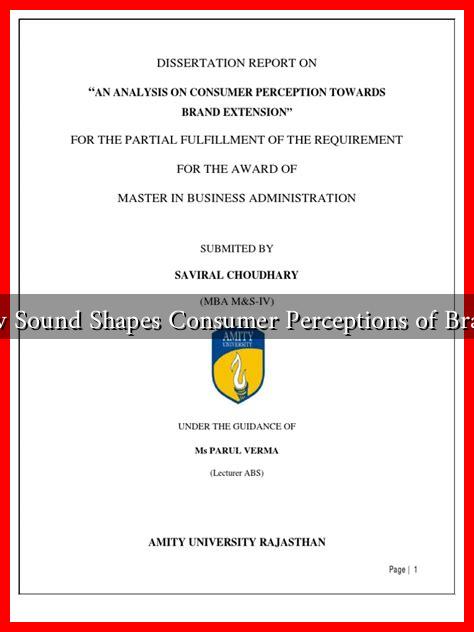-
Table of Contents
- How Sound Shapes Consumer Perceptions of Brands
- The Psychology of Sound in Branding
- Case Studies: Brands That Use Sound Effectively
- 1. McDonald’s: The Iconic Jingle
- 2. Apple: The Startup Sound
- 3. Coca-Cola: The Sound of Refreshment
- The Role of Music in Retail Environments
- Sound Branding: A Strategic Approach
- Conclusion: The Sound of Success
How Sound Shapes Consumer Perceptions of Brands
In the modern marketplace, brands are constantly seeking innovative ways to connect with consumers. One often-overlooked element in this equation is sound. From jingles to ambient music, sound plays a crucial role in shaping consumer perceptions and influencing purchasing decisions. This article explores how sound impacts brand perception, supported by research, examples, and case studies.
The Psychology of Sound in Branding
Sound is a powerful tool in branding, capable of evoking emotions and memories. According to a study published in the journal *Psychology & Marketing*, auditory stimuli can significantly influence consumer behavior. Here are some key psychological aspects of sound in branding:
- Emotional Resonance: Sounds can evoke specific emotions, which can enhance brand recall and loyalty.
- Associative Learning: Consumers often associate certain sounds with specific brands, creating a mental link that can influence their purchasing decisions.
- Attention Capture: Unique sounds can capture attention more effectively than visual stimuli, making them a powerful tool for advertising.
Case Studies: Brands That Use Sound Effectively
Several brands have successfully harnessed the power of sound to shape consumer perceptions. Here are a few notable examples:
1. McDonald’s: The Iconic Jingle
McDonald’s “I’m Lovin’ It” jingle is one of the most recognizable sounds in the world. This catchy tune not only enhances brand recall but also creates a positive emotional association with the brand. Research shows that jingles can increase brand recognition by up to 50%, making them a valuable asset in advertising.
2. Apple: The Startup Sound
Apple’s startup sound is a subtle yet powerful auditory cue that signifies quality and innovation. This sound has become synonymous with the brand, reinforcing its identity and creating a sense of anticipation among users. The emotional connection formed through this sound enhances customer loyalty and brand perception.
3. Coca-Cola: The Sound of Refreshment
Coca-Cola has effectively used sound in its advertising campaigns, particularly the sound of a can opening or a bottle being poured. These sounds evoke feelings of refreshment and enjoyment, aligning perfectly with the brand’s image. A study by the *Journal of Consumer Research* found that consumers are more likely to choose a product when they hear sounds associated with it.
The Role of Music in Retail Environments
Music plays a significant role in shaping consumer experiences in retail environments. Research indicates that the type of music played in stores can influence shopping behavior:
- Tempo: Upbeat music can encourage faster shopping, while slower music can lead to longer browsing times.
- Genre: The genre of music can affect the perceived quality of products. For example, classical music can enhance the perception of luxury items.
- Volume: Moderate volume levels can create a comfortable shopping atmosphere, while excessively loud music can drive customers away.
For instance, a study conducted by *Journal of Retailing* found that playing classical music in a wine store increased sales by 38% compared to playing pop music. This demonstrates how carefully curated soundscapes can enhance consumer experiences and drive sales.
Sound Branding: A Strategic Approach
Sound branding is an emerging field that focuses on creating a unique auditory identity for brands. This can include everything from jingles to sonic logos. Here are some strategies for effective sound branding:
- Consistency: Ensure that the sound elements are consistent across all platforms, from advertisements to in-store experiences.
- Emotional Connection: Choose sounds that resonate emotionally with your target audience.
- Memorability: Create catchy and memorable sound elements that consumers can easily recall.
Conclusion: The Sound of Success
In conclusion, sound is a powerful tool that shapes consumer perceptions of brands. By understanding the psychological impact of sound, brands can create emotional connections, enhance brand recall, and influence purchasing decisions. As demonstrated by successful case studies and research findings, integrating sound into branding strategies can lead to significant competitive advantages. As the marketplace continues to evolve, brands that leverage the power of sound will likely stand out and resonate more deeply with consumers.
For further reading on the impact of sound in marketing, check out this article on Forbes.

